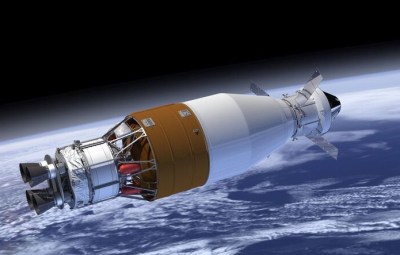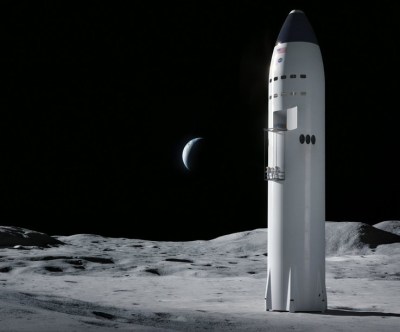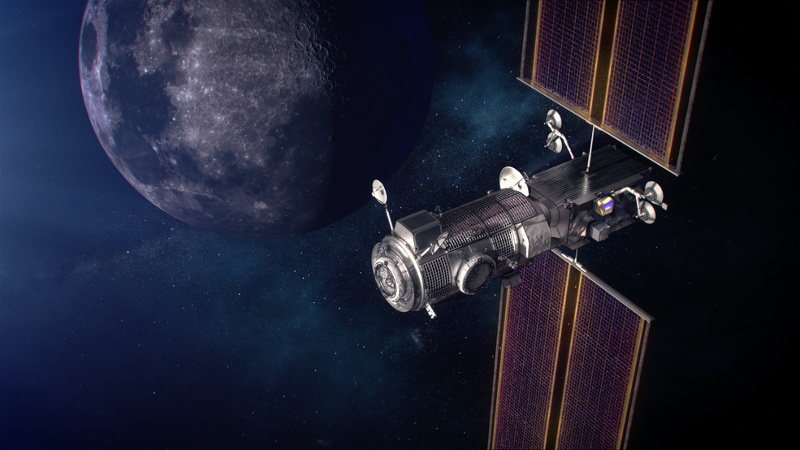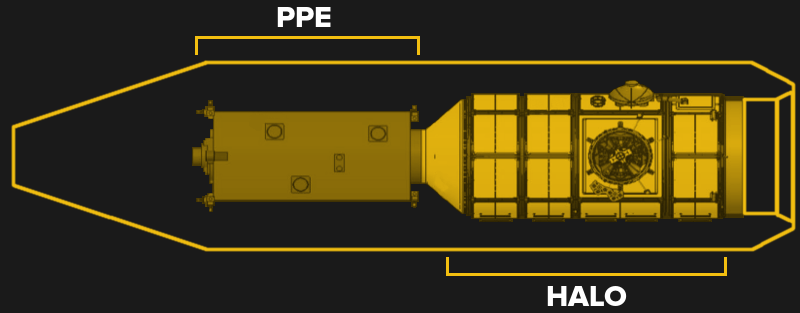While not a Cabinet position, the NASA Administrator is nominated by the president of the United States and tasked with enacting their overall space policy. As such, a new occupant in the White House has historically resulted in a different long-term directive for the agency. Some presidents have wanted bold programs of exploration, while others have directed NASA to follow a more reserved and economical path, with the largest shifts traditionally happening when the administration changes hands between the parties.
So it’s no surprise that the fate of Artemis, a bold program initiated by the previous administration that aims to establish a sustainable human presence on the Moon, has been considered uncertain since the November election. But the recent announcement that SpaceX has been awarded a $331.8 million contract to launch the first two modules of the lunar Gateway station, an orbital outpost that will serve as a rallying point for astronauts coming and going to the Moon’s surface, should help quell some concerns. While the components still aren’t slated to fly until 2024 at the earliest, it’s a step in the right direction and strong indicator that the new administration plans on seeing Artemis through.
Two For the Price of One
The contracted launch is unique in that SpaceX is being tasked with launching two separate modules, the Power and Propulsion Element (PPE) built by Maxar Technologies, and the Habitation and Logistics Outpost (HALO) from Northrop Grumman, on the same rocket. These two core Gateway components, which essentially make up a miniature space station themselves, will be mated on the ground at Kennedy Space Center and tested for several months before being loaded onto a Falcon Heavy.
While the mass of these two modules is well within the capabilities of the Falcon Heavy, their combined length will require SpaceX to develop an extended payload fairing. They will also need to build a new mobile gantry at launchpad 39A that will allow for the modules to be attached to the rocket vertically, rather than horizontally as is the case with all current Falcon and Falcon Heavy launches. The new fairing and integration facility naturally represent a considerable investment by SpaceX, but long term, these changes will enable the Falcon Heavy to carry large national security satellites for the Pentagon and provide the company with a lucrative new revenue stream.
Originally the PPE and HALO modules would have flown on two separate rockets, possibly even by different launch providers, needing an autonomous docking maneuver after their rendezvous at the Moon. But to reduce costs and get the Gateway operational sooner, it was decided to send them both at the same time. This does introduce the possibility that a failure could result in the loss of both modules, but since their functionality is so intrinsically linked anyway, NASA believes it’s worth the risk to expedite the program.
Deep Space Legacy
As with many NASA projects, Gateway is the end result of a long and winding development process. The PPE is an evolution of the electric propulsion module intended for the agency’s now-canceled Asteroid Redirect Mission, and the idea of a small self-contained space station being sent to lunar orbit has its roots in the Deep Space Habitat concept that engineers have been working on since the retirement of the Shuttle refocused NASA’s long-term goals on activities outside of low Earth orbit.

Back in 2017, NASA was calling this concept the Deep Space Gateway, and envisioned it as a stepping stone to distant destinations such as Mars. The three initial modules of the Deep Space Gateway would be launched into orbit around the Moon using the upgraded Block 1B variant of the Space Launch System. In this configuration, the booster would use the Exploration Upper Stage (EUS) and have enough power to carry a station module and Orion crew capsule in one launch. At that point, commercial launches were only being considered for less critical components which would be added on later, such as an airlock or additional laboratory module.
But the EUS, much like the Space Launch System itself, is taking far longer to bring online than anyone at NASA anticipated. Despite being in development since 2014, the design only made it through the final review stage a few months ago, and actual flight hardware isn’t expected to be completed until at least 2025. This would put it beyond all the currently scheduled Artemis missions, though if everything goes according to plan, by that time both Gateway and a potential outpost on the lunar surface will be able to benefit from the enhanced cargo capabilities of the SLS.
Competition, or Lack Thereof
Launching large objects to the Moon and Mars is arguably why NASA is building their Space Launch System in the first place, and yet according to the current timeline, Gateway will be up and operational before the megarocket is capable of delivering any noteworthy amount of cargo. Much like the recent announcement that NASA will fly the Europa Clipper on a commercial booster, this is another example of the agency’s homegrown vehicle losing a high profile mission to a smaller and cheaper rocket.

At this point, one of the few clear uses for the Space Launch System and its EUS in the context of the Artemis program is for delivering large landers to the Moon. Whether they go directly into lunar orbit or rendezvous with the Gateway, two out of the three commercial Human Landing Systems selected by NASA are designed to be launched aboard an SLS Block 1B. Although as a contingency, their principle components can also be carried on smaller rockets and assembled in orbit.
But the third lander, proposed by SpaceX, is a variant of their Starship vehicle that can take off from Earth and land on the Moon under its own power. As a completely independent system, it doesn’t require the Gateway or SLS to complete its mission. On one hand, this is a clear advantage given how frequently NASA’s own plans miss their deadlines and slip further into the future. But there’s certainly an argument to be made against pinning so much of the Artemis program on a single contractor.
A long-term sustainable program for lunar exploration and utilization should include a fleet of boosters and spacecraft that are independently designed, manufactured, and operated. Yet as of right now, SpaceX is the sole company responsible for both launching Gateway and sending regular resupply missions to it. Whether it’s Old Space or New Space, there’s an inherent risk in relying so completely on any one entity. But unless something changes in the next few years, it looks like that’s exactly the situation NASA’s Artemis program could find itself in.

















I’m glad they still plan to launch it at all. I just hope they actually use it and it doesn’t become another Skylab.
Of course they do – NASA needs a new money pit after the ISS runs out of extension.
Take a look at that picture of Starship sitting on the Moon. There’s no way it could land like that without falling over.
Commander probably got a last minute scribbled note in his flight bag “Do NOT land on the quicksand like squishy bits, pick somewhere firm!! “
Hmmmm, there were prior SLS projects, but shuttle was officially STS, wonder if I was seeing journalistic conflation/confusion in the popular press reports (i.e. non technical correspondents with no interweb to set them straight.) referring to it as SLS at times.
Whoops, I coulda sworn I was under my other post below. Ignore, or mentally cut and paste it there.
That’s assuming it doesn’t have some kind of independently extendable landing struts to compensate for the unevenness of the the solid surface beneath the dust. I highly doubt they haven’t thought of the fact that the moon is covered in quite a layer of it. It’s only been a known issue since before apollo. Though after we landed we realized it’s not as bad as we feared, more like a very fine spikey sand then an actual dust.
And I read (years ago) that NASA and Co. were surprised by how little dust they found on the lunar surface, much less than they estimated.
An early concept was to have a “needle shaped” lunar lander to stick itself into the surface like a pincushion. But it wasn’t needed.
Since the Lunar Starship is not planning to return back to ground on Earth, I too am assuming they will carry a kit of landing gear struts that they’ll assemble (perhaps with a spacewalk) in LEO or even docked at the ISS.
The great thing about cheap reusable rockets is that a Cargo Starship could loft the struts on a prior or subsequent flight, meaning the Lunar Starship interior can be fitted out using all available space for operations.
I assume you posted before the Falcon boosters landed that they would not work.
You also probably posted the test water tanks that flew could not land.
I suggest you stop posting about future developments.
^ This ^
Not to mention that hydraulic lift? What do they do when there’s some dust in some mechanism preventing it from working? There’s no ladder as a fallback option?
Who says there’s no ladder?
It’s the moon. They can jump.
How do you propose the dust find itself into the system? Moon has gravity but no atmosphere …
– they need a concrete and flat platform to landing Starship on.
– So they need to build that platform first.
– So they need to bring to the moon some machnes to do concrete.
– so they need a Starship to bring to moon the machines.
oh my, wait a second….
Yes, it is bad to rely on one contractor but if only one contractor is capable of going on schedule, it is the best option.
Overall SLS is not living up to expectations.
Heh, I’m still getting a few hundred millisecond pipeline stall every time I read SLS, because that’s what the shuttle was called until mid 80s at least.
SLS was one of the first Linyx distributions.
The year of the Selective Laser Sintering desktop
There are lots of options as longs as it doesn’t have to be “Made in the USA” only ;)
And Amazon is set to deliver to space too.
Amazon Centauri Prime!
To space?
Heinlein had intercontinental rockets for passengers and freight before anyone went to the moon.
Didn’t we also get solar freaking roadways… well conveyor belts.
The Roads Must Roll!
A base on the moon would be a good stepping stone. Building and launching would be a lot easier regardless of where one wants to go, or what one wants to launch.
After learning to adjust to the radiation levels, limited resources (water, air), temperature swings, long darkness, etc.,
Landing on Mars would seem gentle by comparison.
Oh, and the Monolith is on the Moon, not Mars!
B^)
I suspect easier than paying the gravity tax every time we want to send a rock into space. Never mind unlike a space station there’s room to grow.
Will astronauts stopping over at the HALO, be able to play Halo in their spare time?
Some months ago I watched and interview with the Italian Astronaut Samantha Cristoforetti about her time on the ISS. When she was asked what she was currently doing her reply was that she was leading the ergonomics team for the Lunar Gateway!
I think it bears repeating that Artemis is NOT a NASA project. It is an international project, and ESA & JAXA are playing important parts too. There are multi-national treaty obligations involved which NASA and the US need to meet.
I mean…it is literally a NASA created and managed project. They just have international partners that are contributing to help reduce costs.
The program would continue without them, and realistically, the current timetable for the first crewed landing doesn’t rely on anything from the international partners beyond the ESA-made ICPS.
The issue is more the US parts not being ready in time, like SLS. Fingers crossed for Supertyazh to get things back on schedule.
As most of us know, NASA is frequently jerked around by Congress and Administrations, and not given enough money to develop any man-in-space programs on the sort of schedule they did in the ’60’s and ’70’s. If the DoD had to put up with the opala NASA does, the Navy would still be sailing the USS Midway.
Don’t make excuses for NASA’s shitty handling of money, and shitty project management.
The current SLS project is a smoldering mess. You would be too if you were being jerked around and milked like a cow by corrupt politicians and a greedy contractor. To be fair though there have been inexcusable technical issues too, like not being able to ground test an existing manned-flight qualified and proven engine.
The United Nation’s “Outer Space Treaty” from 1967 was both a noble and wise arrangement, I think. It’s an ode to mutual respect and humanity. It’s among one of these things that makes me proud being human.